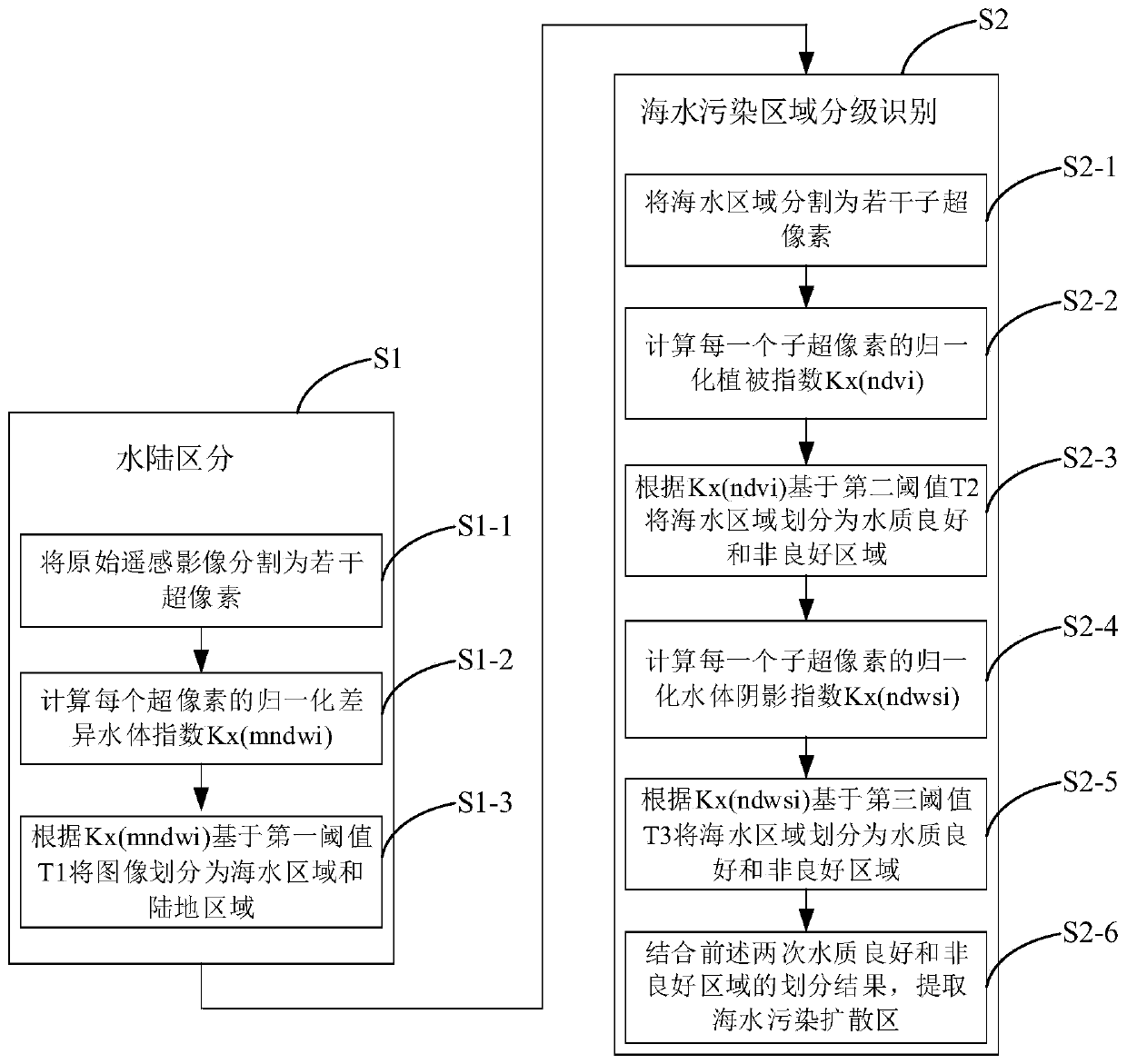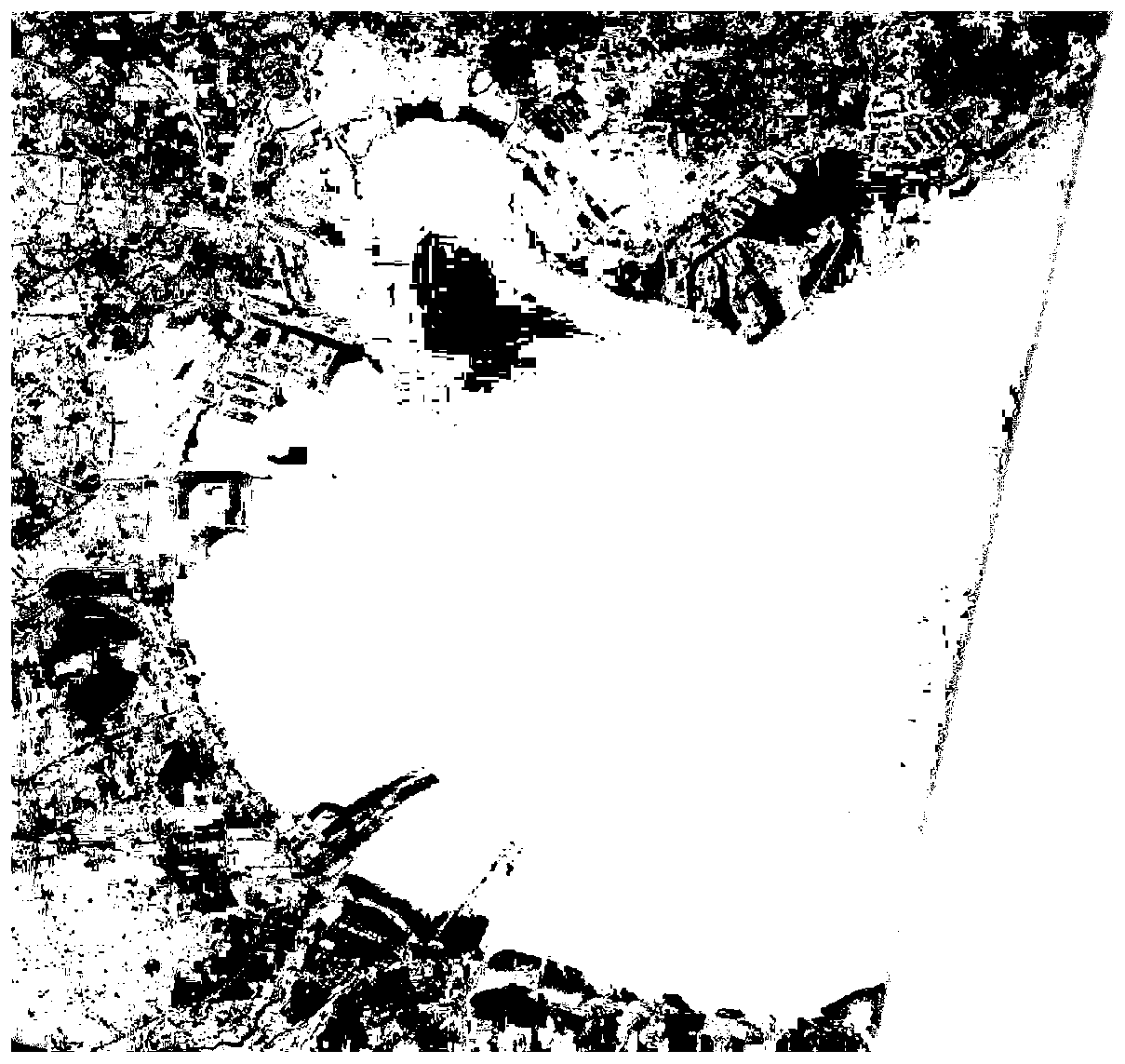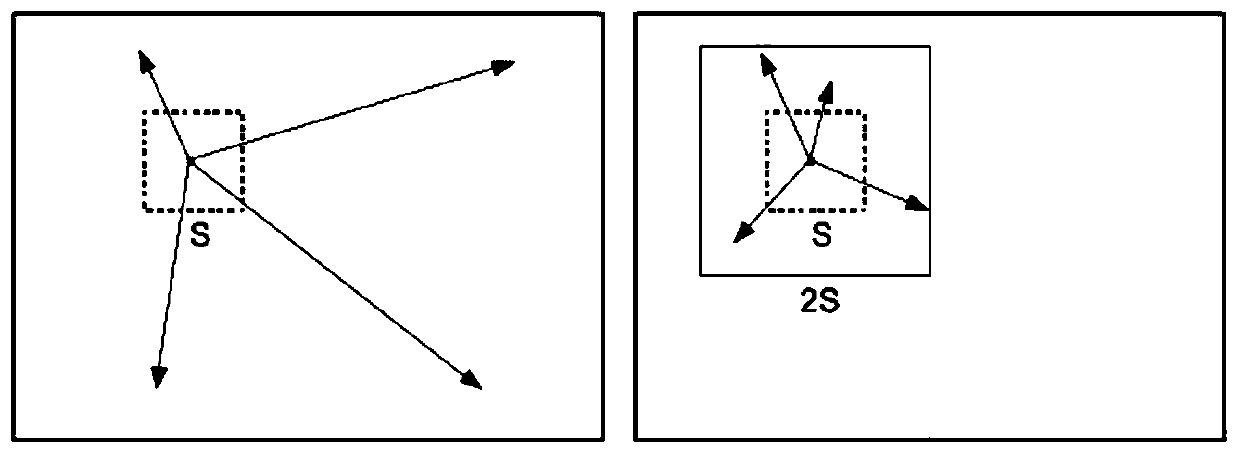Seawater pollution area identification method and device based on high-resolution remote sensing image
A seawater pollution and remote sensing image technology, which is applied in the field of seawater pollution area identification, can solve problems such as lack of connection, high requirements for computing equipment, and huge capital investment, and achieve the effect of small amount of calculation, exquisite method, and improved efficiency
- Summary
- Abstract
- Description
- Claims
- Application Information
AI Technical Summary
Problems solved by technology
Method used
Image
Examples
Embodiment Construction
[0039] The technical solution of the present invention will be further described below in conjunction with the accompanying drawings.
[0040] The method of the present invention first uses a supervised learning algorithm to automatically classify remote sensing images of sea and land, and through process-based iterative clustering, the classification results can reach a higher level of accuracy. Then, using the chlorophyll concentration difference between the marine polluted area and the surrounding seawater and the brightness difference of the pollutant shadow, the normalized normalized vegetation index (NDVI) related to chlorophyll and the normalized shadow related to brightness in remote sensing interpretation Index (NDWSI), the idea of image interpretation based on segmentation and the saliency mechanism based on human vision are combined, and then the extraction of marine polluted areas is realized through threshold segmentation. refer to figure 1 , in one embodiment,...
PUM
 Login to View More
Login to View More Abstract
Description
Claims
Application Information
 Login to View More
Login to View More - R&D
- Intellectual Property
- Life Sciences
- Materials
- Tech Scout
- Unparalleled Data Quality
- Higher Quality Content
- 60% Fewer Hallucinations
Browse by: Latest US Patents, China's latest patents, Technical Efficacy Thesaurus, Application Domain, Technology Topic, Popular Technical Reports.
© 2025 PatSnap. All rights reserved.Legal|Privacy policy|Modern Slavery Act Transparency Statement|Sitemap|About US| Contact US: help@patsnap.com



